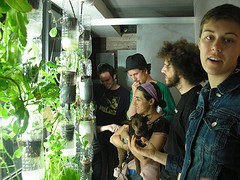 In an uplifting TED video, Britta Riley, founder of R&D-I-Y (Research & Develop It Yourself), talks about how a global network of interested citizens developed a simple window farming design that allows urban dwellers to grow food in their apartment windows.
In an uplifting TED video, Britta Riley, founder of R&D-I-Y (Research & Develop It Yourself), talks about how a global network of interested citizens developed a simple window farming design that allows urban dwellers to grow food in their apartment windows.
Using open-source collaboration methods, and sharing a common interest in growing fresh food in their living spaces, the online innovation community has grown to 25,000+ participants.
In the same way that Egyptians used Web 2.0 social media tools (e.g. Facebook and online forums) to rise up, R&D-I-Y is using those social media tools for product development and innovation. All this, done outside the for-profit sanctum of traditional corporate culture.
Here’s the video of Britta describing the journey that started with a simple desire to grow healthy fresh food in her tiny apartment.
The resulting window garden design is in the public domain, at Windowfarms.org, and can be purchased as a kit, or, for Do-It-Yourselfers, you can download plans and participate in the collaborative community, to build one for yourself.

This is important. If you can build it, you can repair it. And in our disposable culture, on a finite planet, that’s a big win.
By building something, we come to understand the nature of it – how it works. And, should it break, we understand it enough to repair it. And we have the collaborative community backing us up, if we need some advice.
Repair – it is one of the 4 Rs of sustainable living – Reduce, Recycle, Reuse and Repair. Here’s how window farming helps us live more sustainably:
- Reduce the distance food travels, water consumed for irrigation, CO2 and water pollution, fuel imports, food cost, food nutritional loss, etc.
- Reuse things like wire, light fixtures, fabric, etc., that might normally be discarded, when you are building it from scratch.
- Recycle things like plastic bottles, which are basic building blocks of do-it-yourself window farms. But in this design, no need to recycle (which takes energy) – we can Reuse discarded plastic bottles.
- Repair – If you build it, you can repair it.
For those that want to live lighter on the land, and more sustainably, the 4 Rs are our credo.
Urban Farming
One hundred years ago, almost half of Americans were employed in farming or food production. Now it is less than .4 percent of the nation. While this is a testament to improvements in the efficiency of agriculture, much has been lost. We have become disconnected from how our food is produced. Convenience often drives our choices. We consume much more prepared food, loaded with preservatives and with less nutritional goodness.
Our food travels an average of over 1,500 miles to get to us. That consumes a lot of fuel, emits a lot of CO2, reduces food freshness, and removes dollars from our local communities.
As our global population has doubled to over 7 billion people, the per capita land available for growing food has been cut in half. There are serious concerns about how we will feed the exponentially growing population. And that population will largely be dwelling in cities.
What if much of the food we wanted to eat was, literally, within reach?

Urban agriculture allows us to reclaim the built urban landscape for growing food. But now, in the dense urban setting, we will do it vertically. The acres of farmland are transformed into vertical window scapes, or rooftop gardens.
My wife and I garden year round, raise chickens, and enjoy a local community committed to growing healthy food. In addition to the economic benefits (food is one of the biggest costs of living), there is something deeply satisfying about picking fresh produce and cooking it up, on the spot – sharing it with friends.
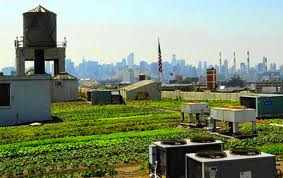 Growing food is a daily miracle. The tiny seed becomes a mature plant that can provide food for months. In an economy of increasing scarcity, gardens provide a welcome abundance.
Growing food is a daily miracle. The tiny seed becomes a mature plant that can provide food for months. In an economy of increasing scarcity, gardens provide a welcome abundance.
Beyond the satisfaction of growing ones own food, there is a real health benefit. Listen to Dr. Terry Wahls describe her remarkable story about how careful food choices cured her MS. At the center of her diet – kale and greens that can be grown in a window garden.
As Dr. Wahls points out, we can be eating a lot of food, but starving ourselves of the nutrients needed for good health. Obesity in the US is at all time highs – thanks to the proliferation of prepared foods that taste great but have little nutritional value – e.g. soft drinks, pizza, fast food, etc.. Here’s just one example. Each day, the average American consumes 100 to 200 times more sugar than we did 100 years ago. Healthcare costs now represent 17% of US GDP. Anything we can do to stay healthy will save us enormous amounts of money and the inconvenience and discomfort of doctor visits, hospitalization, surgery, back problems, addiction to pain-killers, chemo, radiation, …
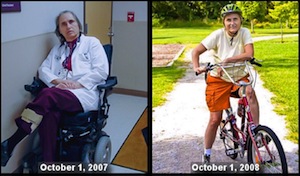 Bad food put Dr. Wahls in a wheel chair. Good food got her back on her own two feet – In a matter of seven months. But with so much processed food being engineered to addict us to the food (sweet, salty, buttery, etc.), the choice to eat nutritious healthy foods is not easy. It is a daily choice that rewards only if we are steadily committed to the journey.
Bad food put Dr. Wahls in a wheel chair. Good food got her back on her own two feet – In a matter of seven months. But with so much processed food being engineered to addict us to the food (sweet, salty, buttery, etc.), the choice to eat nutritious healthy foods is not easy. It is a daily choice that rewards only if we are steadily committed to the journey.
A Global Perspective on Food
Pulling the lens back for a more global view – as world population expands inexorably – we are approaching a tipping point with regard to food production.
Recently, a report that gained little attention in the news, but has major ramifications for every nation, was published by the UN’s Food and Agriculture Organization (FAO).
The FAO report – The World Food Situation – reports that world food prices surged to a new historic peak in January, for the seventh consecutive month. The FAO Food Price Index (below) is a commodity basket that regularly tracks monthly changes in global food prices.
This is the highest level (both in real and nominal terms) since FAO started measuring food prices in 1990.
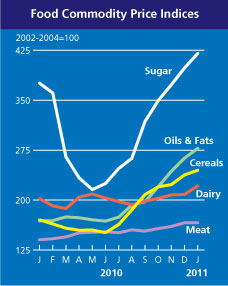 As we can see from the chart on the right, the price of individual commodities that comprise the index – meat, dairy, cereals, oil and fats, and sugar – are all on the rise.
As we can see from the chart on the right, the price of individual commodities that comprise the index – meat, dairy, cereals, oil and fats, and sugar – are all on the rise.
Global food prices have exceeded their pre-recession price levels. Some of this is due to the price of petroleum returning to pre-recession levels. About 17% of all petroleum production is consumed for food production. Petroleum is a key ingredient in the manufacture of fertilizer and pesticides, and sources energy for irrigation, food transport, etc. Note how the Food Price Index closely parallels the price of oil.
In addition, climate change is driving an increase in extreme weather, including record heat during growing seasons, record flooding, and extreme rain.
And as nations move up the affluence curve, their consumption of food increases, creating rising demand from a limited supply. As Julian Cribb, author of The Coming Famine: The Global Food Crisis and What We Can Do to Avoid It, astutely points out – as developing nations become more affluent, they consume more protein, in the form of fish, meat, milk, eggs, etc. For an example from China, read the article that appeared in The Financial Times today: Chinese Corn Imports Forecast to Soar. Note the mention of corn for meat production.
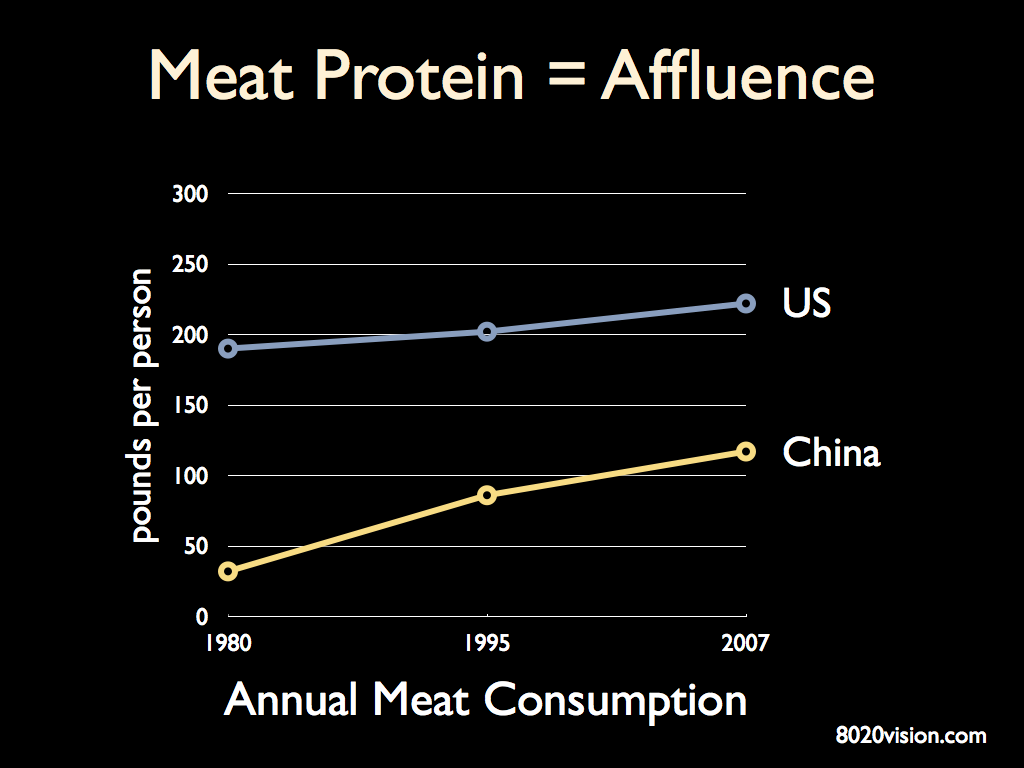
Protein is usually produced with grain, and it is an inefficient process:
- It takes 1,ooo tons of water to produce a ton of grain
- It takes about 15 pounds of grain to produce a pound of beef
- So, it takes about 5,200 gallons of water to produce a pound of beef
Though food prices are volatile, and change daily, the trend is clearly up.
As our population increases, and as each nation seeks affluence, food will become a major factor in the stability of all nations. Food shortages in China will effect the price of our food here in the US, as nations vie for the precious basics of life, on a finite planet.
Want to change the world? Plant some food in your window.
Related Articles
Climate Change May Reduce Protein in Crops

Joe says:
Inspiring. I like the idea of growing cooking herbs in one of these.
Chris says:
Great article and great links! I often watch those TED videos, but somehow had missed both of these. I’m working up a new talk on growing edibles at home that I’ll be giving on my local circuit out here, and both your links are relevant for me. In fact, my landscape design clients have been asking for more help with growing edibles–seems to be an area of increasing interest here in MD…which I find encouraging!
Thank you,Chris PaxPax Garden Design
jaykimball says:
Thanks Chris!
jaykimball says:
Thanks Joe. Yes, Basil in winter – Imagine that.
One of the cool side-effects of the window farming technique comes from the use of compact fluorescent lights to encourage growth in the winter sun. The lights not only provide the needed light, but warmth as well. Herbs like basil flourish in warm conditions.
jaykimball says:
Here’s another example of open-source product development. The device is called “The Water Canary” and provides novel water testing and social networking of the test results. See: http://blog.ted.com/2012/01/13/waterwise-fellows-friday-with-sonaar-luthra/